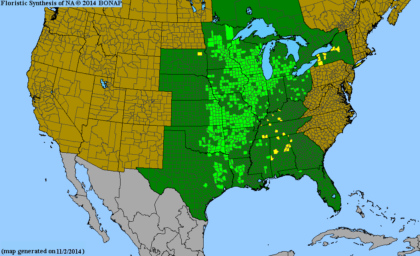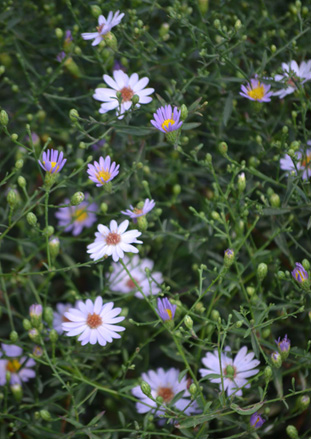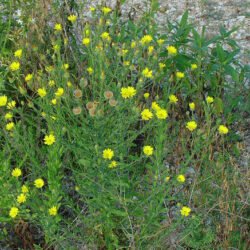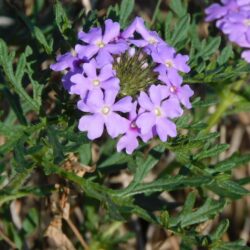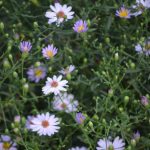Asters
$3.50 – $5.00
...
Asters are key pollinator plants as they flower late in the fall when few other plants are in bloom. These low-maintenance perennials tend to spread where they are planted, forming large, bushy patches that attract bees and butterflies.
Calico Aster – Symphyotrichum lateriflorum
Tiny white flowers cover the widely spreading branches of this aster. Grows well in moist, semi-shaded woodland settings, but can grow in full sun, too. Tolerates periodic flooding. 2-3’ height. Pinch plants back in late spring to early summer for bushier, shorter growth.
Prairie Aster – Symphyotricum turbinellum
Lavender flowers bloom in abundance every fall on this resilient plant. A notably beautiful aster. Full sun, medium to dry water, drought tolerant, 1-3’ height.
Heath Aster – Aster ericoides
This native aster is covered in tiny white blooms in the fall, attracting butterflies and bees. Grows 2-3’ tall, may need staking. Spreads by rhizomes, so can be considered aggressive. Tolerant of drought and poor soils. Medium to dry soil, full sun.
Willowleaf Aster – Symphyotricum praeltum
A lovely, extra-tall aster with pale purple flowers clustered near the top of its stems. Like other asters, it blooms in late summer or fall, and is a key nectar source for migrating monarchs and other pollinators. This low-maintenance perennial is rhizomatous, forming dense colonies that attract bees and butterflies. Pinch back the stems several times before July to help control plant height and promote bushiness. Native to central & eastern Oklahoma. Full to partial sun, wet to medium soil, 3-5’ height.
Sky Blue Aster – Symphyotrichum oolentangiense
Asters are key pollinator plants as they flower late in the fall when few other plants are in bloom. These low-maintenance perennials tend to spread where they are planted, forming large, bushy patches that attract bees and butterflies.
Sky Blue Aster is native to central and eastern Oklahoma. Pale violet flowers with yellow center disks bloom in early fall. Attracts butterflies and other beneficials. Spreads by rhizomes and by self-seeding. Drought tolerant. Full to partial sun, dry to medium, well-drained soil, 2-3’ height, 1-2’ spacing.
